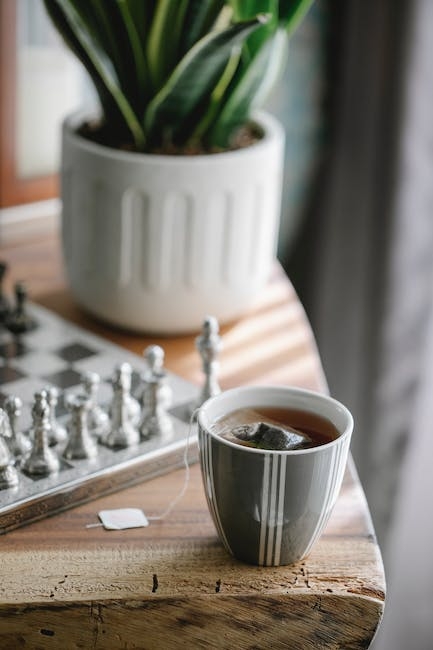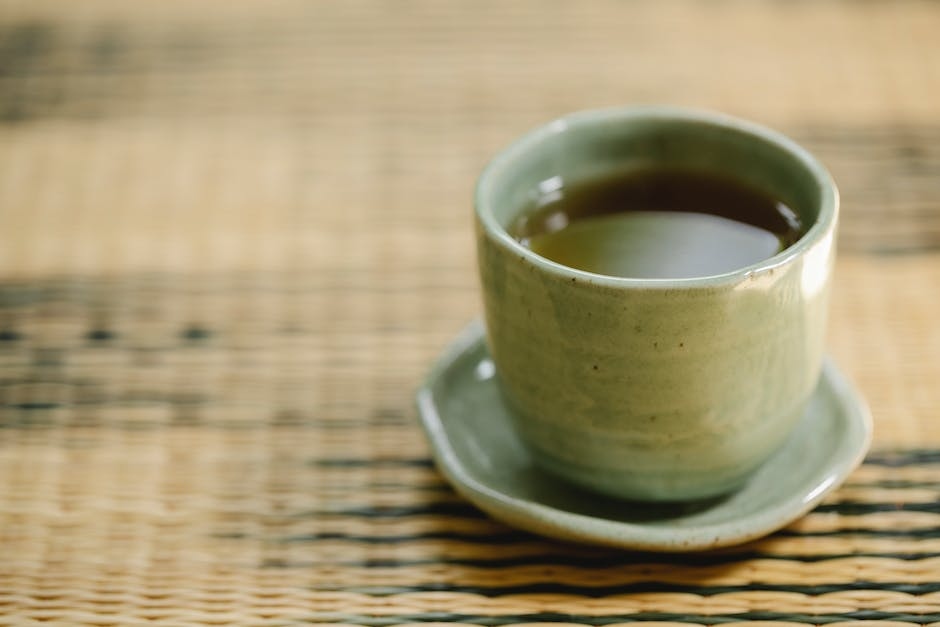Tea Grades: Understanding the Quality of Your Cup of Tea
For many of us, a cup of tea is an essential part of our daily routine. Whether you prefer a bold and robust black tea or a delicate and floral green tea, the quality of your tea can greatly impact your enjoyment. So, how do you know if you’re drinking a high-quality tea? One way to determine the quality of your tea is by understanding tea grades.
What are Tea Grades?
Tea grades are a way to classify tea based on its quality and appearance. The grading system varies depending on the region where the tea is produced. For example, the grading system for Chinese black tea is different from the grading system for Indian black tea.
Generally, tea grades are determined by the size of the leaves, the amount of tips or buds, and the presence of broken or damaged leaves. The highest grade of black tea is usually referred to as “FTGFOP” (Finest Tippy Golden Flowery Orange Pekoe), which means that the tea consists of only the youngest and most tender leaves with the highest amount of tips. Other grades include “SFTGFOP” (Special Finest Tippy Golden Flowery Orange Pekoe) and “TGFOP” (Tippy Golden Flowery Orange Pekoe).
Lower grades usually consist of larger leaves, fewer tips, and more broken or damaged leaves. These grades are often used for tea bags or blends.
Does Tea Grade Affect Taste?
While tea grades are an important factor in determining the quality of tea, they do not necessarily indicate the taste or aroma of the tea. Some lower grade teas can still be enjoyable, while some higher grade teas may not suit everyone’s taste preferences. It’s important to remember that taste is subjective and what one person may find delicious, another may not.
Final Thoughts
Tea grades provide a useful tool for understanding the quality of your tea. However, it’s important to note that the grading system is not the be-all and end-all of tea quality. There are many other factors that can affect the taste and aroma of your tea, including the growing conditions, processing methods, and brewing technique.
| Tea Grade | Description |
|---|---|
| FTGFOP | Finest Tippy Golden Flowery Orange Pekoe |
| SFTGFOP | Special Finest Tippy Golden Flowery Orange Pekoe |
| TGFOP | Tippy Golden Flowery Orange Pekoe |
So, the next time you enjoy a cup of tea, take a moment to appreciate the quality of the leaves and the complexity of the flavors. Whether it’s a high-grade tea or a lower grade blend, each cup is a unique experience that can bring comfort and joy to your day.
Discovering the World of Broken Grades Tea
When it comes to tea, there are many types and grades to choose from. One of the most common types of tea grades is broken grades. Broken grades refer to tea leaves that have been intentionally broken into smaller pieces during processing. This method is used to make the tea brew faster and stronger, which is why it’s commonly used in tea bags.
What are the different categories of broken grades?
Broken grades are further categorized into different grades based on the size of the tea leaves. The different categories of broken grades include:
| Grade | Description | Flavor Profile |
|---|---|---|
| BP (Broken Pekoe) | The largest broken grade, with leaves that are still visible and identifiable as tea leaves | Robust, full-bodied flavor |
| BOP (Broken Orange Pekoe) | Smaller than BP, with leaves broken into smaller pieces | Rich and strong flavor |
| BOPF (Broken Orange Pekoe Fannings) | Even smaller than BOP, with leaves broken into very small pieces that are almost powdery in texture | Mild and smooth flavor |
| Dust | The smallest and lowest grade of broken tea, consisting of tiny particles that are almost like dust | Quick brewing and strong flavor |
Each category of broken grade has its own unique flavor profile and brewing characteristics. For example, BP is known for its robust, full-bodied flavor, while dust is often used for making tea bags because it brews quickly.
Are broken grades less expensive than whole leaf grades?
Broken grades are usually less expensive than whole leaf grades, but they can still produce high-quality tea if they are processed and stored properly. It’s important to note that the quality of broken grades can vary depending on the processing and storage methods. Therefore, it’s important to select a reputable tea supplier and store the tea in a cool, dry, and airtight container.
How can you brew broken grades tea?
Brewing broken grades tea is easy and straightforward. Here are some general guidelines:
- Use 1 teaspoon of tea per 8 oz. of water
- Boil water and let it cool slightly
- Steep the tea for 3-5 minutes
- Adjust the steeping time and temperature based on the type of broken grade tea
Overall, broken grades tea is a popular and versatile type of tea that offers a range of flavors and brewing characteristics. Whether you prefer a strong and robust taste or a mild and smooth flavor, there’s a broken grade tea for everyone. So, why not give it a try?
Experience the Rich Flavors and Unique Characteristics of Whole Leaf Grades of Black Tea
Are you a tea lover looking for the highest quality teas available in the market? Look no further than whole leaf grades of black tea. These grades are made from the highest quality leaves, which are plucked from the top of the tea plant and carefully processed to create a full-bodied and rich flavor. In this blog post, we will explore the different whole leaf grades of black tea and their unique characteristics.

FTGFOP1 – The Finest Tippy Golden Flowery Orange Pekoe 1
The highest grade of whole leaf black tea is known as FTGFOP1. This grade of tea is made from the youngest and most tender leaves, which are hand-plucked from the top of the tea plant. FTGFOP1 is known for its delicate flavor and aroma, as well as its beautiful golden color. Each cup of FTGFOP1 is a luxurious experience that will leave you feeling pampered and satisfied.
SFTGFOP1 – Super Fine Tippy Golden Flowery Orange Pekoe 1
Another popular whole leaf grade of black tea is known as SFTGFOP1. This grade of tea is similar to FTGFOP1, but it is made from slightly larger leaves, which give it a stronger and more robust flavor. SFTGFOP1 is perfect for those who enjoy a bold and complex cup of tea.
TGFOP – Tippy Golden Flowery Orange Pekoe
TGFOP is a slightly milder whole leaf grade of black tea than FTGFOP1 and SFTGFOP1. It is made from high-quality leaves that are plucked from the top of the tea plant. TGFOP has a smooth and refreshing taste that is perfect for those who want a delicious cup of tea without too much intensity.
GFOP – Golden Flowery Orange Pekoe
Finally, we have GFOP, which is made from larger leaves and has a more earthy flavor. This whole leaf grade of black tea is perfect for those who enjoy a more traditional cup of tea that is rich and full-bodied.
In conclusion, whole leaf grades of black tea are highly sought after by tea connoisseurs for their superior quality and bold, complex flavors. Whether you prefer a delicate and luxurious cup of FTGFOP1 or a bold and robust cup of SFTGFOP1, there is a whole leaf grade of black tea for everyone. So, sit back, relax, and enjoy a cup of whole leaf black tea today!
The World of Rare and Specialty Black Tea Grades
For tea enthusiasts, the world of black teas is a treasure trove of unique flavors, aromas, and experiences. But for those seeking something truly special and exclusive, there are rare and specialty black tea grades that are highly sought after. These teas are prized not just for their taste, but also for their limited availability and the stories behind their production.
Examples of Rare and Specialty Black Tea Grades
Let’s take a closer look at some of the most popular rare and specialty black tea grades:
| Tea Grade | Origin | Description |
|---|---|---|
| Darjeeling first flush | India | Harvested in the first flush of the season in the Darjeeling region of India, this tea is known for its delicate floral and fruity notes. |
| Keemun Mao Feng | China | This Chinese black tea is prized for its complex flavor profile, which includes hints of wine and smoke. |
| Yunnan Golden Tips | China | This rare Chinese black tea is made from young buds and leaves, resulting in a sweet and malty flavor. |
| Jun Chiyabari Himalayan Tips | Nepal | Produced in the Himalayan region of Nepal, this black tea has a floral aroma and a smooth, fruity taste. |
| Taiwan Sun Moon Lake | Taiwan | This black tea is grown in the Sun Moon Lake region of Taiwan and has a unique flavor profile that is both sweet and earthy. |
| Doke Black Fusion | India | Produced in the Doke tea estate in Bihar, India, this black tea has a complex flavor that combines fruity and spicy notes. |
Why are Rare and Specialty Black Tea Grades so Special?
There are several factors that make rare and specialty black tea grades so highly prized:
- Unique Flavor Profiles: Each tea grade has a distinct flavor profile that sets it apart from other black teas. For example, Darjeeling first flush has delicate floral and fruity notes, while Keemun Mao Feng has hints of wine and smoke.
- Limited Availability: Many rare and specialty black tea grades are produced in small quantities, making them difficult to find and highly coveted by tea enthusiasts.
- Cultural Significance: Some tea grades, such as Darjeeling first flush, have a rich cultural history and are associated with specific regions and traditions.
- Special Harvesting Techniques: Some rare and specialty black tea grades, such as Yunnan Golden Tips, are made from young buds and leaves that require special harvesting techniques and careful processing.
How to Enjoy Rare and Specialty Black Tea Grades
When it comes to enjoying rare and specialty black tea grades, there are a few things to keep in mind:
- Brewing Temperature and Time: Different tea grades require different brewing temperatures and times to bring out their unique flavors. For example, Darjeeling first flush is best brewed at a lower temperature for a shorter time to preserve its delicate notes.
- Use High-Quality Water: The quality of the water you use can have a big impact on the taste of your tea. Use high-quality, filtered water to ensure that your tea tastes its best.
- Pair with Food: Rare and specialty black tea grades can be paired with a variety of foods to enhance their flavors. For example, Keemun Mao Feng pairs well with spicy foods, while Yunnan Golden Tips goes well with chocolate and other sweet treats.
Final Thoughts
Rare and specialty


Leave a Reply